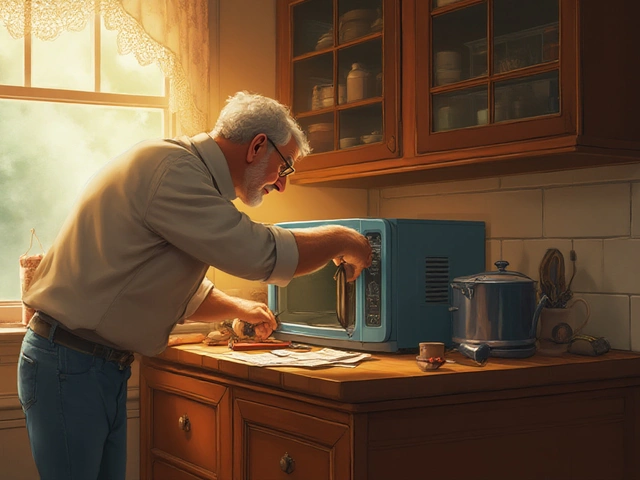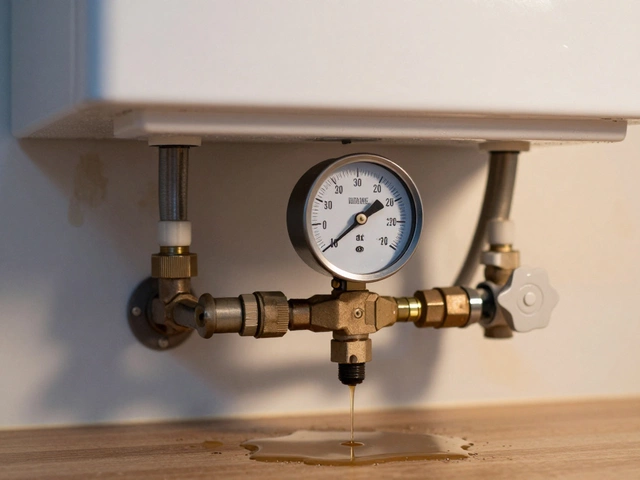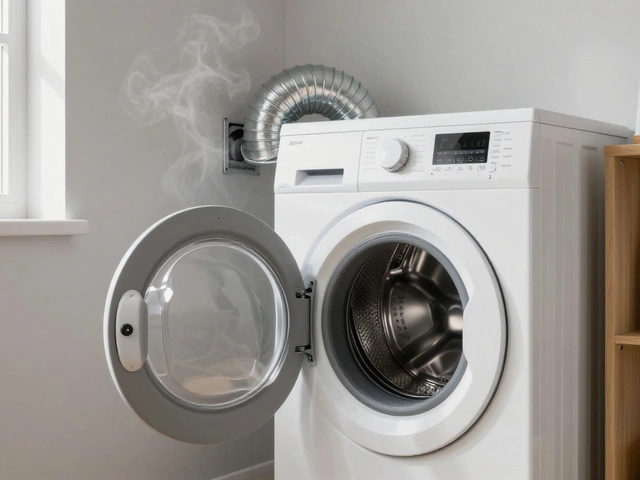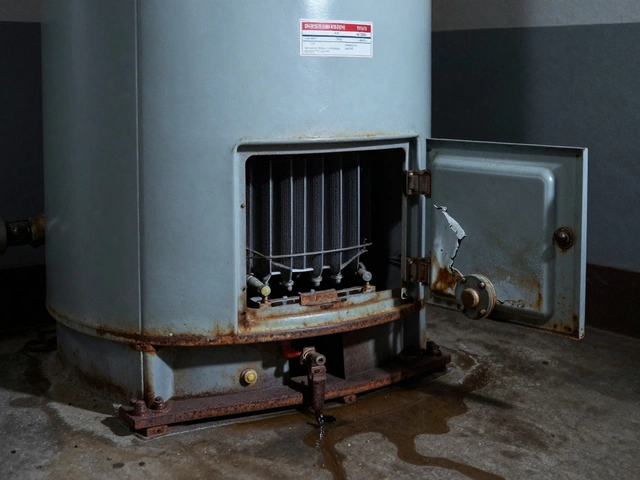Microwaves have become indispensable in our kitchens, saving time and making meal preparation convenient. However, like any other household appliance, they aren't immune to the occasional hiccup. From suddenly refusing to heat your food to making unsettling noises, a multitude of issues can arise.
Understanding what typically goes wrong with your microwave is the first step in diagnosing the problem. While some issues might seem daunting at first, many are quite common and have simple solutions that you can often tackle on your own, sometimes even without needing any tools.
By knowing what signs to look for and what simple steps to take, you can tackle these repairs head-on and maybe even save yourself a few dollars from calling in the pros. Let's dive into the typical issues microwaves face and how you can effectively troubleshoot them.
- Introduction to Microwave Functionality
- Common Failures in Microwaves
- Simple Troubleshooting Techniques
- Safety Precautions When Repairing Microwaves
- When to Call a Professional
- Maintenance Tips for Longevity
Introduction to Microwave Functionality
To understand what might be going wrong with your microwave, it's essential to grasp how these modern marvels work. Microwaves, since their debut in the late 1940s, have revolutionized cooking by drastically reducing the time needed to heat food. At the heart of this appliance is the magnetron, a type of vacuum tube that generates short radio waves or microwaves. These waves excite the water molecules in food, creating heat through vibration and rapidly cooking your meal. Without the magnetron functioning efficiently, your appliance would lose its ability to heat food altogether.
While this sounds remarkably technical, the concept is quite straightforward, making it possible for almost everyone to grasp how a microwave operates without a science degree. These waves are channeled into the cooking area where they bounce around and are absorbed by the food. An interesting fact is that the microwave-safe turntable found in many units helps to ensure even cooking. As the food rotates, it's exposed to the waves from multiple angles, reducing the likelihood of cold spots.
Aside from the magnetron, other critical components need to function well for your device to perform optimally. This includes the waveguide, a critical channel that directs the microwaves towards the food. You also have the high-voltage transformer, which increases the electricity's voltage for the magnetron, and several other parts like a cooling fan and various internal controls. It's worth noting that these components are meticulously shielded within the appliance to prevent the microwaves from escaping, making them perfectly safe when used as intended.
In terms of functionality, modern units have increasingly incorporated sophisticated controls and sensors. These days, many models come equipped with sensors that detect steam as your food cooks, adjusting cooking times and power levels automatically. This helps prevent overcooking or uneven heating. In fact, the appliance is programmed to stop immediately if it detects any anomaly. It's an intelligent system that often includes user-friendly digital displays and kitchen timers. According to a statement by the FDA, “Microwave ovens are effective and safe for heating food, provided users follow the guidelines for proper usage."
Eaton Howe, a well-reputed appliance technologist, once said, "Understanding the basics of how a device works allows us to better appreciate its value and troubleshoot with confidence."
The reduced cooking time and efficiency have made microwaves a kitchen staple. With their continued advances, it's easier than ever to reheat leftovers, warm beverages, or even cook full meals. However, like any appliance, understanding its operation is pivotal for both safe usage and effective troubleshooting. Having this foundational knowledge makes identifying potential issues more straightforward, whether it's inconsistent heating, sparking, or strange odors.
Common Failures in Microwaves
When your microwave starts acting up, it's often due to a few frequent culprits that can be spotted with an attentive eye. One of the most common issues is when a microwave just stops heating. You place your coffee in for a warm-up, hear the familiar hum, but moments later, it's still ice cold. This problem can often be traced back to a failed magnetron, the part that generates the microwaves that heat your food. A damaged magnetron is an irreversible problem, often necessitating a replacement.
Another issue you're likely to encounter is the microwave’s turntable not rotating. For evenly cooked or reheated meals, the turntable must move without hindrance. When it doesn't spin, the culprit is frequently a worn-out or misaligned roller guide. Aligning or replacing this part usually resolves the problem, restoring your microwave's functionality. Of course, sound issues also plague these devices. Strange buzzing or crackling noises often point to several causes, including a worn-out diode or a capacitor nearing the end of its life.
Should your microwave buttons become non-responsive, the issue could be a faulty touchpad. After repeated use, dirt or moisture distorting the touchpad signals can occur, creating momentary panic. Surprisingly, cleaning the control panel or drying it out with care often solves the problem. However, if the touchpad screen remains insensitive to touch, you may need the keypad membrane replaced. Power issues are another frequent microwave complaint, characterized by dead displays or unexpected shutdowns. Often, these are a result of a tripped fuse or faulty door switch.
Sometimes, you might find mysterious sparks flying around inside the microwave. Contrary to immediate fears of a total meltdown, these sparks usually occur because of the presence of metal. Whether it’s a forgotten spoon left in a cup or the metal trim of a container, ensuring only microwave-safe materials enter the appliance will keep these sparks at bay. In rare circumstances, damage to the waveguide cover might also cause sparking, calling for a prompt replacement to prevent further damage.
Beyond these hardware issues, persistent odors can pester the most patient person. A few long-forgotten food splatters can transform a once new gadget into a source of unwanted smells. Wiping down your microwave after each use and using a container of water with lemon slices to steam-clean your device can refresh it significantly. In the journal, Consumer Reports states, "Regular cleaning not only keeps your appliance odor-free but also enhances its performance by preventing build-up that could lead to malfunctions."
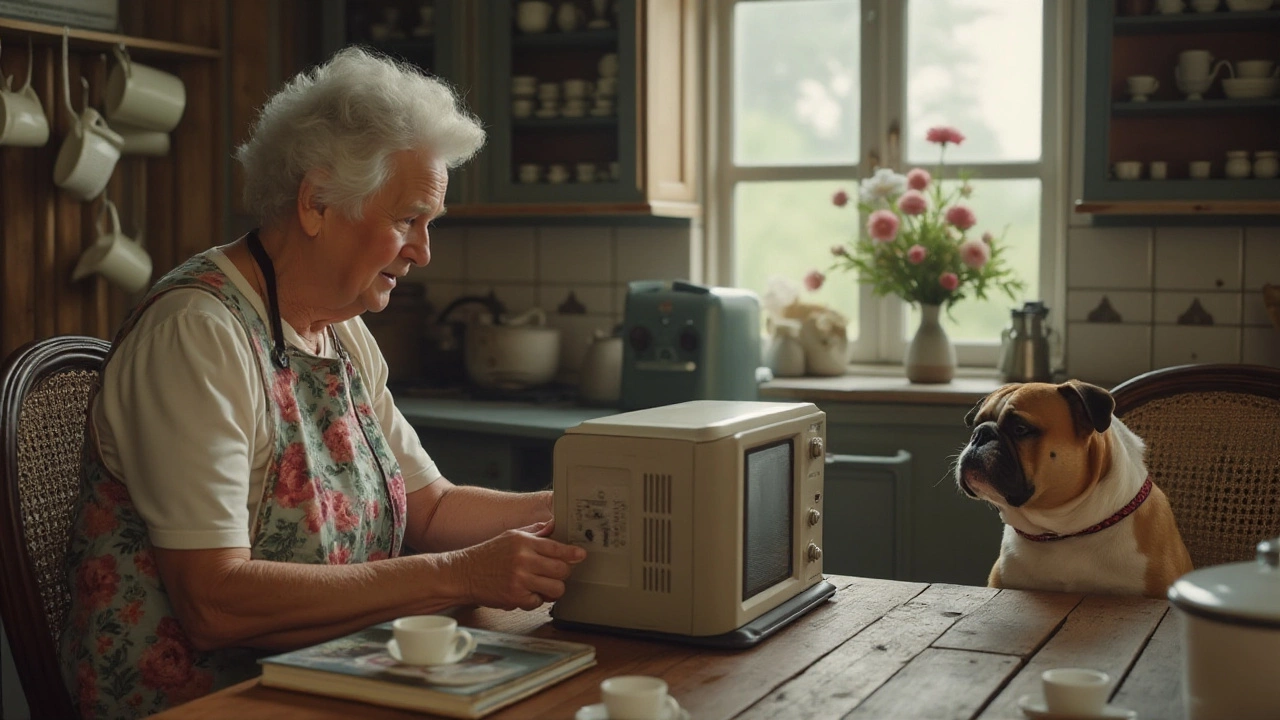
Simple Troubleshooting Techniques
When it comes to microwave repair, sometimes the simplest techniques can make all the difference. Many issues can be resolved with a basic understanding of how these appliances work. For instance, if your microwave isn't heating, the first thing to examine is whether it's even plugged into the power source correctly. This might sound basic, but sometimes the plug can work its way loose, especially if it's rarely moved. Once confirmed, another early step is to check your home's circuit breaker. A tripped breaker can stop your microwave cold, leaving you with lukewarm meals and growing frustration. Resetting the breaker is a straightforward fix that could restore your microwave’s function in no time.
Microwaves can sometimes suffer from door alignment problems. A poorly closed door means the appliance doesn’t start because the sensors aren’t engaged. Carefully inspect the latches and hinges to ensure they are in good shape. A common technique to address this is readjusting or realigning the door by gently pressing it into place, allowing the sensors to activate. This easy fix can often seem like magic when suddenly, the microwave whirrs back to life. Now, let's talk about unexpected noises. These can often be traced back to the turntable. Take a closer look at the rollers or the plate itself to see if they're sitting properly. Realigning them can often turn your noisy microwave quiet, just like the clamor of the storm easing into a drizzle.
Checking the Control Panel
The control panel isn't without its quirks either. Over time, buttons can wear out, become unresponsive, or even get stuck. Gently cleaning around the edges with a soft cloth can work wonders, clearing away gunk that could be causing the stickiness. As a last resort, the control panel itself might require resetting. Unplugging the microwave for a few minutes and then plugging it back in resets its system much like rebooting your computer. It might seem a little 'techy', but it's usually effective and takes barely any effort. Sometimes, reading the manual for model-specific resets can save time and a headache.
"The best solutions are often the simplest and most overlooked." – A common adage that rings true when dealing with kitchen appliances.
The Promise of a Good Cleaning
A clean microwave is a happy microwave. Build-up from food splatters and grease can interfere, not only with performance but also with safety. Regular cleaning prevents malfunction. Mix a bowl with water and a few tablespoons of vinegar, then heat it until the microwave steams up. The steam will loosen dried food particles, making them easy to wipe away. This simple trick gives your microwave the freshness boost it needs to continue working correctly. Taking care of your appliance with these basic actions allows you to address even the more technical problems effectively. The more you understand the workings, the longer you can extend the life of this essential kitchen companion.
Safety Precautions When Repairing Microwaves
Repairing a microwave can be a daunting yet rewarding task, but one must prioritize safety above everything else. These appliances are packed with electronic components and parts that can hold a charge, even when unplugged. Before delving into any repair, ensure the microwave is completely disconnected from any power source. Unplug the device and allow it to sit for at least an hour to discharge stored electricity. This step is crucial to prevent any risk of electric shock, which can be surprisingly painful or even fatal.
Another key component to be wary of is the capacitor, one of the most potentially dangerous parts of a microwave. Capacitors store electrical energy, and they need to be discharged properly before handling. Using an insulated tool to short-circuit the terminals is a common method to safely release any residual voltage. Be particularly careful not to touch the capacitor directly with your hands. Wearing rubber insulating gloves may also provide an additional layer of protection when handling electrical parts.
"Safety isn't just a slogan, it’s a way of life," often quoted in workplaces to remind us about the importance of taking precautions, resonates strongly when working with electrical appliances.
Equally important is having the right tools on hand. Use non-conductive tools, specifically those made for electronics, to minimize the possibility of accidental discharges. Screwdrivers should be magnet-tipped to control screws and reduce the odds of them falling into inaccessible parts of the microwave. Keep a flashlight handy to illuminate those hard-to-see areas within the appliance, making it easier to inspect components and connections.
Understanding where the key components are located is another crucial step. Familiarize yourself with the microwave’s user manual or any available diagrams. Knowledge about the layout of components such as the magnetron, transformer, and circuit boards can prevent unnecessary handling of parts that are working perfectly fine. Knowing what you're dealing with aids in making informed decisions during the repair process, contributing to both efficacy and safety.
In any repair scenario, having a clutter-free workspace can be underrated but significantly impacts the ease and safety of repairs. Clear any unnecessary items from your workspace to provide adequate room to maneuver the microwave and avoid accidents. Your workspace should be well-ventilated and well-lit to notice any sparks or smells that might indicate issues with electrical connections. Having a fire extinguisher nearby is a smart precaution, especially when dealing with electrical appliances that could potentially overheat or short-circuit.
Finally, while DIY repairs are satisfying, don't hesitate to call a professional if the task at hand feels beyond your expertise. The cost of a professional repair can be well worth the assurance of a job done safely. Don't compromise on safety, and remember that professionals have the benefit of experience, training, and specialist equipment. Your safety and that of your family always come first, especially when dealing with potentially hazardous appliances.

When to Call a Professional
There come times when despite our best efforts, a stubborn microwave issue persists. It's important to recognize when this moment occurs and understand that certain problems are better left to the trained hands of a professional. Microwaves are complex kitchen appliances that utilize electricity in a unique way. Mishandling them could lead to exacerbated damage or even personal injury. If your microwave is displaying symptoms such as persistent fuse blowouts, it might be signaling a deeper electrical issue. The internal components responsible for regulating power may be malfunctioning, which isn't something to take lightly.
Another scenario requiring professional intervention is when you hear a loud banging or continuous sparking. This could indicate a problem with the magnetron, an essential component responsible for generating the microwave's heat. Attempting to repair or replace a faulty magnetron without the right expertise can expose one to hazardous microwave radiation. Professionals have the necessary equipment and knowledge to handle such components safely, ensuring no harm comes to you or the microwave's functionality.
If your microwave suddenly becomes non-responsive, not turning on despite having a power source, this might be more than a simple fix. There could be an issue with the internal circuits or the main control board. These components are intricate and sensitive, demanding a level of expertise most of us lack. One wrong move could not only render the microwave irreparable but also pose significant risks, like electrical shocks.
A third sign might be water leakage from the microwave, which isn't normal and could suggest issues with the door seals or internal corrosion. While replacing a seal might seem like a doable DIY project, it's crucial to understand that the microwave's door is essential for containing its waves. Faulty repair here could lead to leaks, posing more serious health risks.
Engaging professionals for these tasks isn't just a matter of safety but also efficiency. They can save you from long hours of troubleshooting and potentially expensive missteps. As Yates from Service Repair Magazine noted,
"Trusting a professional not only ensures repair accuracy but also extends the appliance's life, preventing small issues from snowballing into significant problems."A good practice is to weigh the complexity of the problem, considering your comfort level and the possible consequences of self-repair before diving into fixing your microwave issues yourself.
Moreover, professional services often come with warranties for their work. Should a problem persist post-repair, you'll have the reassurance that expert help is available without incurring further costs. This guarantee not only saves money but also gives peace of mind. If cost is a concern, it's worth noting that while some services might seem pricey, they're typically far cheaper than purchasing a brand-new appliance.
Maintenance Tips for Longevity
Keeping your microwave in top shape is not just about avoiding pesky repairs, but also about ensuring that it remains an efficient and reliable helper in the kitchen. It's easy to forget that even this small kitchen wonder demands a bit of tender loving care. With some routine maintenance and mindfulness, you can extend the life of your trusty microwave. Firstly, cleanliness plays a significant role in maintaining microwave performance. Make it a habit to wipe the interior after every use. Leftover food particles can absorb radio wave energy from the microwave, potentially causing burn marks or even fires over time. For a quick cleaning hack, you can fill a microwave-safe bowl with water and a splash of vinegar, then heat it for a few minutes. The steam will loosen grime, making it easy to wipe away.
Another important consideration is the placement of the microwave. Ensure that it's placed on a level surface with sufficient space around it for ventilation. Overheating can significantly reduce the lifespan of a microwave, so blocking air vents can lead to unnecessary stress on the appliance. Keep your microwave away from excessive moisture and heat sources typically found near stovetops and sinks – these can cause corrosion and damage over time. Kitchen appliance tips experts often suggest conducting a regular check of the door seals. A tight seal is crucial for efficient cooking and safety. If you notice any wear or damage, it's best to address it promptly to avoid energy leakage.
It's worth considering the frequency of use as well. Like any appliance, a microwave that's working overtime will naturally face more wear and tear. However, lighter use should not substitute for good maintenance practices. Also, avoid slamming the microwave door, which can throw the alignment of the latch and affect the appliance's functionality. According to an article from Consumer Reports, "Routine maintenance can prevent 80% of unexpected repairs." This is a testament to how a little effort goes a long way.
Avoiding metallic content inside the microwave is another crucial safety and maintenance tip. Metals can cause electric arcs, leading to internal damage or even fires. Always check your containers and dishes for hidden metal components, which are not always obvious. Finally, be mindful of any persistent issues such as weird noises or unusual operations. These could be warning signs indicating the need for professional attention. Keep the user manual handy, as it offers valuable insights on troubleshooting your specific microwave make and model.
Regular inspection and some basic maintenance are key to ensuring your microwave serves you well over the years. These simple steps could help you avoid many common microwave repair scenarios, saving you both time and money in the long run. So, whether it’s a quick-clean method or a thorough placement check, a little goes a long way in keeping your microwave lively and ready to heat your next meal.




